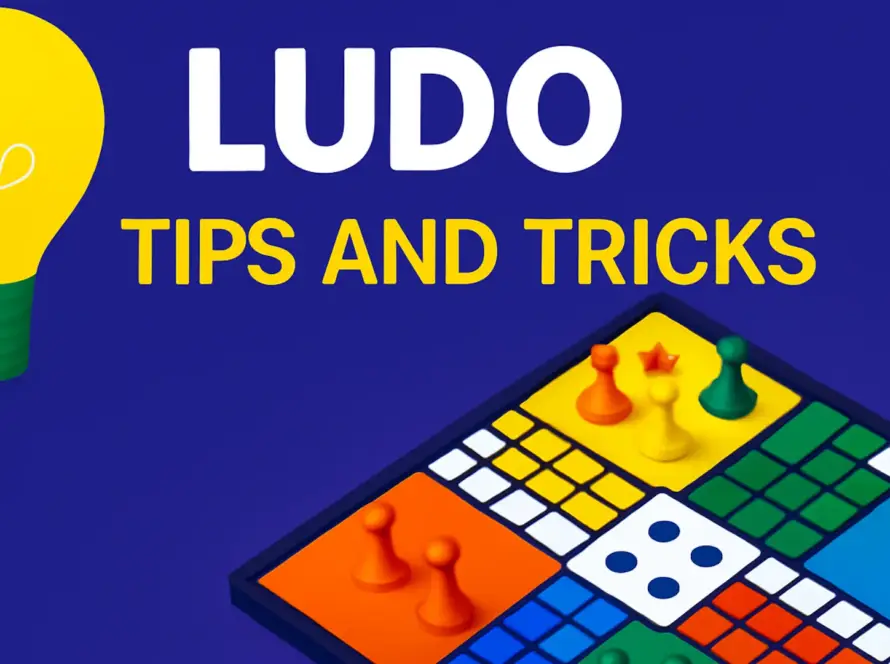Table of Contents
Introduction
Ludo is more than just a board game—it’s a nostalgic thread woven into the fabric of Indian households. From summer vacations to family get-togethers, the colorful Ludo board has witnessed it all. With the rise of mobile gaming, the experience has only grown more accessible, turning a physical pastime into a digital favorite. Yet, at the heart of every match—whether offline or online—is the Ludo goti, a small piece that carries strategic weight. Understanding the role and smart use of these gotis can shift the game dramatically in your favor, especially in competitive online settings. And if you’re new to digital gameplay, learning how to play Ludo online is the perfect starting point.
What Is a Ludo Goti?
In Hindi, goti refers to a small spherical or token-like object—often used in games. In Ludo, a goti represents the player’s piece on the board, typically color-coded as red, blue, green, or yellow, especially in games like Pocket Ludo. Each player begins with four gotis placed in their starting area, and the goal is to navigate all four to the center of the board. While they may look identical, the strategic choices surrounding which goti to move and when add layers of depth to gameplay. This seemingly simple component becomes pivotal in decision-making during both casual rounds and more competitive setups, such as those available on platforms that integrate features like multiple game modes and real-money tournaments, highlighted within the Pocket Ludo game features ecosystem.
Historical Origins of Ludo Goti Concept
The origins of Ludo trace back to Pachisi, an ancient Indian game played in royal courts using cloth boards, cowrie shells for dice, and pawns carved from wood or stone—early representations of what we now call gotis. Pachisi emphasized strategic movement and alliances, elements that have survived in the modern version. Over time, the game was simplified and adapted during British colonial rule into what became known as Ludo.
As the game transitioned from royal pastime to household staple and eventually into digital formats, the goti maintained its symbolic centrality. Today’s virtual tokens are modern avatars of the historical pawns, retaining their role in contesting space, capturing rivals, and reaching the safety of home. These changes reflect not only a transformation in material but also in how we interact with traditional games through mobile screens in the ludo app.
Types of Goti Movements in Ludo
Each goti in Ludo follows a structured path that mirrors the classic mechanics of the board. The journey begins with rolling a six to release a goti from its yard, a crucial step to win the game. Once active, the goti moves clockwise across the board, competing for safe passage while dodging rivals. The objective is to complete a full loop and enter the player’s colored home column, finishing the race at the central triangle.
Safe zones—usually marked—serve as tactical pauses where a goti cannot be captured. These spots are critical when facing aggressive opponents. Strategic movement also includes the possibility of forming blockades by stacking two gotis, effectively halting progress for others.
In competitive formats such as real-money games or online multiplayer modes, these movement dynamics are heightened by time limits and fast-paced decisions, especially when playing with friends in private rooms or match setups. This form of real-time engagement is central to the experience described in the guide on how to play Ludo online with friends.
Smart Strategies Using Your Gotis
Winning consistently at Ludo requires more than lucky dice rolls—it demands smart manipulation of your gotis. A fundamental strategy is to bring all your gotis out early. Having multiple pieces in play increases your options with every roll and improves your control over the board.
Spacing is another essential tactic in the ludo board game. Keeping gotis too close together can make them vulnerable to chain captures in the ludo board game. By spreading them out, you minimize risk while expanding your influence. Meanwhile, placing a goti on a safe spot when an opponent trails behind can prevent unnecessary eliminations.
Blockades are a powerful defensive move. Two gotis on the same square in a ludo board game create an impassable wall that can disrupt your rivals’ progression. Conversely, when behind in the game, calculated aggression—such as targeting unprotected gotis—can create opportunities to catch up.
These tactics often distinguish casual players from seasoned strategists, particularly in settings where consistent performance is key. Many of these strategic patterns are broken down in the practical examples shared within the Ludo tips and tricks blog for winning real money in online matches., which outlines how to think ahead with every token on the board.
Online Ludo Goti Tips for Real-World Advantage
When the game shifts from the board to the screen, the fundamentals remain—but the pace and pressure increase in the online ludo game. Online Ludo adds elements like countdown timers, unpredictable matchmaking, and competitive formats that reward sharp, decisive gameplay.
In such settings, using your gotis effectively becomes even more crucial. Prioritize movement into safe zones, especially when opponents hover nearby. Online platforms also make it easier to set traps—by intentionally leaving a goti exposed, you can bait rivals into vulnerable positions and retaliate strategically.
Another edge lies in understanding the interface. Being familiar with the game’s layout, animations, and delay windows can help in timing aggressive moves or quick retreats. Keeping a steady pace ensures you never lose a turn due to timeouts, especially in tight matches where every second matters, which can be crucial when playing online for real money.
On platforms where every move can influence real outcomes, such as those offering real-money earning games without investment, players who apply focused token strategy often see better results over time.
Common Mistakes to Avoid with Gotis
Even seasoned players can fall into predictable patterns that compromise their position, especially in online matches where strategies can be adapted to win the game. One of the most frequent missteps is clustering gotis together. While it may seem like strength in numbers, a single opponent’s move can disrupt your entire formation.
Another overlooked mistake is advancing recklessly without accounting for rivals’ positions. Moving a goti just to make use of a dice roll—without considering board threats—often results in unnecessary eliminations. Similarly, focusing too long on a single goti while ignoring others limits flexibility and increases the risk of being cornered.
Players often underestimate the power of safe zones, bypassing them to speed toward the finish. However, in moments where you’re under threat, pausing at these marked spots can preserve progress and open space for a tactical pivot.
In online settings, especially when matches are time-bound, rushing decisions is common. This urgency often leads to hasty sacrifices or missed kill opportunities. Some of these patterns are especially visible among those new to competitive play, as seen in formats like Pocket Ludo’s private multiplayer rooms—where playing Ludo with friends online often heightens pressure and decision fatigue.
Ludo Goti in Different Gameplay Modes
Ludo’s core mechanics remain consistent, but the dynamics shift significantly depending on the mode of play. In a two-player match, the board is more open, making each goti move sharper and more reactive. There’s little room for error, and every offensive step must be balanced with a fallback plan.
In contrast, four-player games introduce layers of unpredictability. Here, spreading out your gotis becomes a defensive necessity, as threats can arise from multiple directions. Blockades gain even more value, and reading multiple opponents simultaneously becomes a key differentiator.
Tournament or real-money matches demand a heightened level of focus. These formats typically feature time-bound turns and higher stakes, amplifying the consequences of every decision. Strategic restraint—knowing when not to move a goti—is just as important as boldness.
Interestingly, many players find their playstyle shifting based on setting. During travel, for instance, casual Ludo games can turn into spontaneous competitions. Platforms that support flexible match types, especially during idle time like a train ride, cater well to these transitions. For such moments, options like those explored in games designed for train journeys offer both entertainment and challenge.
Cultural and Digital Significance of the Goti Today
The goti in Ludo has always been more than a simple game piece. Traditionally, it’s symbolized a player’s agency—each move representing a calculated decision amidst the randomness of dice. Over generations, these tokens have embodied patience, rivalry, and strategy within family rooms and school corridors.
In its digital evolution, the goti has transformed from a tactile object into a responsive avatar in the ludo app. With vibrant animations, themed skins, and even custom trails, modern apps have reimagined how the goti engages players emotionally and visually. Yet, its symbolic weight remains—the essence of progress, risk, and victory still revolves around these tiny avatars.
Beyond the screen, gotis continue to foster social connection. Online platforms now allow players to interact across geographies, strengthening bonds through friendly rivalry. It’s not uncommon to see siblings, old friends, or distant relatives reconnecting through a shared match—especially on multiplayer apps designed for meaningful play. The testimonials of those who use these platforms often echo a consistent theme: the goti serves as a bridge between tradition and technology, fun and focus, leisure and logic, as evident in stories shared within the Pocket Ludo testimonial section.
Conclusion
Though small in size, the Ludo goti plays a central role in shaping the flow, tone, and outcome of every match. From its historical roots in royal Indian courts to its place on modern mobile screens, the goti has journeyed as a constant emblem of strategy and chance. Understanding its movement patterns, using it wisely in both casual and competitive play, and learning from its potential for both triumph and setback can transform how one approaches the game.
Whether you’re navigating a classic family match or playing on an app that rewards smart gameplay, the goti is more than a piece—it’s your expression of skill on the board. With each roll, it reminds players that thoughtful decisions often outplay sheer luck. For those stepping into the game with curiosity or ambition, platforms like Pocket Ludo offer the ideal space where tradition and modern gaming coexist, as detailed in their about section, capturing both the nostalgia and evolution of this timeless pastime.
FAQs About Ludo Goti
-
What’s the difference between Ludo and Pachisi?
Honestly, they’re pretty similar! Pachisi was this fancy game that Indian royalty used to play centuries ago. The British saw it, liked it, and made their own simpler version called Ludo in 1896. Same basic idea, just easier rules. And today, apps like Pocket Ludo continue that legacy—bringing the game to your fingertips with a modern digital twist.
-
How many gotis does each player get?
You get four little pieces to work with. Your job? Get them all home before everyone else does theirs. Simple as that.
-
Can I change how my gotis look in online games?
Oh yeah, definitely! Most apps these days let you pick different colors and designs for your pieces. Some even have cool animations. Makes it feel more personal, you know?
-
What are those safe spots everyone talks about?
Those are the squares where nobody can knock you out. Think of them as little safe houses on the board. Super handy when you need to hide from aggressive players!
-
Is Ludo just about getting lucky with dice rolls?
Not really! Sure, you need some good rolls, but knowing which piece to move and when makes a huge difference. I’ve seen people with terrible luck still win because they played smart.


